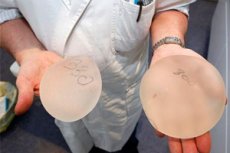New publications
Breast augmentation: what does everyone need to know?
Last reviewed: 01.07.2025

All iLive content is medically reviewed or fact checked to ensure as much factual accuracy as possible.
We have strict sourcing guidelines and only link to reputable media sites, academic research institutions and, whenever possible, medically peer reviewed studies. Note that the numbers in parentheses ([1], [2], etc.) are clickable links to these studies.
If you feel that any of our content is inaccurate, out-of-date, or otherwise questionable, please select it and press Ctrl + Enter.

Currently, one of the most popular and sought-after procedures in the world is breast augmentation – mammoplasty.
Most women resort to this procedure in order to feel more comfortable, having received the desired size. Also, women after pregnancy or those who have faced the problem of sagging breasts with age can turn to mammoplasty.
So what are breast implants?
The implants are made of soft silicone and have silicone elastomer shells. Physiological solution (saline) or silicone gel are used as filling materials.
The technique of inserting saline implants is that first a bag is inserted into the breast area through a small incision, which is then filled with a saline solution. The small incision therefore leaves a small scar. However, the use of such implants can be associated with a number of problems - they can wrinkle or tear, and are also noticeable to the touch.
Silicone implants can be of three types: filled with gel during production, double - one part is filled with silicone, and the second, outer part, is filled with saline solution directly during the operation, and double, but filled the other way around - the outer part is already filled with silicone, and the inner part is filled with saline solution during the operation.
Despite the sufficient choice of types of prostheses, the most popular are still silicone implants, already filled with silicone gel during manufacture. In case of rupture of such a prosthesis, the breast does not change shape, which cannot be said about a saline implant - its contents flow out completely.
Although the shape of the prosthesis may vary, the most commonly used implants are of two shapes - anatomical, teardrop-shaped, and spherical, round. The choice of model depends on the patient's wishes, but a teardrop-shaped prosthesis, which has a more natural appearance, is more expensive.
Unfortunately, there are no eternal silicone prostheses, they also have an expiration date. Before the operation, surgeons must warn patients about when the implant will need to be replaced with a new product.
Complications
Any surgical intervention may entail complications in the form of infectious lesions. According to statistical studies, the frequency of infectious complications ranges from 4% to 9%.
An important fact that women planning breast augmentation surgery should take into account is that this type of breast reconstruction makes it difficult to diagnose tumors later. This is due to the fact that the fibrous capsule that forms around the implant can become saturated with calcium salts over time.
Recovery after surgery
The patient's rehabilitation and the duration of the period required for recovery is on average from 3-5 days to a month. In order for this process to proceed painlessly, nutritionists recommend adhering to certain nutritional rules so that damaged tissues recover faster.
The post-operative diet is based on several principles: less salt and sugar, no food chemicals, more quality proteins and fewer carbohydrates.
To help your body absorb nutrients, try to eat more often (about 5-6 times a day), in small portions. It is very good to eat steamed food during the recovery period. It is also recommended to drink plenty of fluids, up to two liters a day, preferably still water and green tea, rich in antioxidants. Of course, it goes without saying that you need to give up drinking alcohol and smoking in the postoperative period.
With the help of these simple rules, it will be easier for the body to cope with postoperative overload, and this will also help to avoid excessive swelling.

 [
[